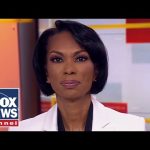In an era marked by uncertainty and upheaval, the pandemic delivered a fresh shock to society, one that reverberated across classrooms and lunchrooms alike. As the world wrestled with public health measures, a strange phenomenon took place in schools, where children faced draconian restrictions that seemed far removed from rational policy. All across the nation, students found themselves confined behind opaque barriers and subject to silent lunches, where the simple act of talking could result in punishment under the guise of disease prevention.
This surreal scenario unfolded even as adults continued their routines, dining out and visiting bars without similar constraints. The juxtaposition of these actions highlighted the absurdity of the situation. While businesses and public spaces operated with relative normalcy, healthy children were barred from school, transforming education into a remote experience for many, with profound repercussions.
A particular consequence for children at the lower end of the socioeconomic scale was irrefutable. Deprived of access to private tutoring or the resources inherent in more affluent educational environments, these students were relegated to an educational setback that they are still struggling to recover from. As the narrative of the pandemic unfolded, it became apparent that the very models used to justify these drastic measures were flawed, built on questionable assumptions, and often lacking empirical grounding.
It’s concerning to uncover that much of the heavy-handed policy regarding school closures rested on arbitrary figures, starting from a conjecture devised by a 14-year-old’s science experiment. The models wielded by esteemed institutions were not invincible to the pitfalls of assumptions manipulated to comply with preconceived outcomes. Despite the lack of concrete evidence, these models influenced widespread policy decisions, revealing a fundamental disconnect between intent and execution in the face of crisis.
Beyond the technical missteps, the reluctance to question the underlying premises of these policies reflected a deeper crisis within the media establishment. Instead of serving as a vigilant watchdog, the media too often aligned with the positions endorsed by a select circle of influencers. This phenomenon was exacerbated by political tribalism that skewed responses to any assertions from political figures, such as the President at the time, urging a reconsideration of school closures. For a nation founded on principles of inquiry and freedom, this lack of skepticism portended a troubling trend.
As society reflects on these tumultuous times, it’s essential to scrutinize how policies impacting the youngest and most vulnerable among us were devised and implemented. A transparent appraisal of decision-making processes will not only safeguard against future overreach but will also ensure that reason, not reactionary measures, guides the path forward.




